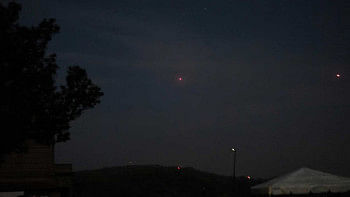Amu warns tanners over relocation delay
Industries Minister Amir Hossain Amu yesterday asked tannery owners to speed up the relocation of hazardous factories from Dhaka's Hazaribagh to Savar.
“Relocation by the deadline is a must,” Amu said without specifying any date.
He spoke at a workshop on leather and leather goods, organised by the Board of Investment (BoI) in Dhaka.
The minister also threatened to cancel plot allocations for tannery owners unless they relocate the factories in time.
“Tanners should complete relocation for the sake of personal and national interest immediately.”
The government will shut all tanneries in Hazaribagh after the June 2016 deadline for the Tannery Industrial Estate project expires, he said.
Earlier, Amu advised tannery owners to start production in the new Tannery Industrial Park in March, but the central effluent treatment plant, a key component of the project, is scheduled to be ready by June this year.
The industrial estate project took off in 2003 with a Tk 175.75 crore fund, and the cost has spiralled 98 percent to Tk 1,079 crore over the decade since its launch. The figure includes Tk 250 crore as government compensations to the tanners.
Until last week, 148 out of 152 tannery owners had begun building their factories in Savar, said Md Sirajul Haider, project director of the Industrial Estate.
“But most tanners have so far only built boundary walls and guard sheds,” he said adding that just 40 companies have made multi-storey buildings at the estate.
Moreover, tannery owners urged the government to provide long-term loans with single digit interest rates to help expedite relocation.
“We are sincere in our efforts to relocate tanneries soon. But we need access to low-cost funds as leather is a capital-intensive industry,” said M Abu Taher, chairman of Bangladesh Finished Leather, Leather Goods and Footwear Exporters' Association.
Tanners will have to invest around Tk 3,500 crore to establish new plants and begin commercial production, he added.
He called upon the government, especially Bangladesh Bank, to take necessary steps to arrange soft loans.
Saiful Islam, senior vice president of Leathergoods and Footwear Manufacturers and Exporters Association of Bangladesh, said: “We want to make tannery relocations happen by the middle of this year.”
“The environment friendly-production is necessary to grab more export orders.”
The leather sector is quite similar to the garment sector, but the scope of value addition is far greater, almost 90 percent as opposed to 40 percent in the garment sector, said Sobur Ahmed, an assistant professor of Institute of Leather Engineering and Technology at University of Dhaka.
Bangladesh is the fourth largest goatskin producer in the world after China, India and Pakistan, he said.
The leather industry has gradually become more dynamic due to its cost competitiveness and abundance of labour, said Hedayetullah Al Mamoon, senior secretary of the commerce ministry.
“Tannery owners have to relocate their factories immediately to protect the environment and grab more export orders,” he said, while urging due compliance.
The leather industry must have a clear vision, as seen in the garment sector, said Nojibur Rahman, chairman of the National Board of Revenue.
“Garment makers have recently set a target to take annual apparel exports to $50 billion by 2021. The leather sector should make a similar plan.”
Syed A Samad, executive chairman of BoI, was disappointed by a long delay in tannery relocation. The decision to relocate was taken in 1996, he added.
The leather sector will be able to export $5 billion annually by 2021 if the tanneries go for greener production, he said.
The industries ministry has already allocated plots on the 200-acre leather estate to 155 tannery owners through BSCIC, a wing of the industries ministry that is implementing the project.
Bangladesh exported $662.88 million of leather and leather goods between July and December, up 6.85 percent year-on-year, according to the Export Promotion Bureau. The sector's exports rose 32.12 percent year-on-year to a record $1.29 billion last fiscal year.
Of the total exports from the leather industry, 60 percent go to the European Union, 30 percent to Japan and 10 percent to the rest of the world, according to industry insiders.
The industry, which has grown on local raw materials, has now emerged as the second largest export earner after garment.
Bangladesh's leather exports account for just 0.56 percent of the global leather and leather goods market worth around $230 billion.
Qamrul Islam, food minister, also spoke.

 For all latest news, follow The Daily Star's Google News channel.
For all latest news, follow The Daily Star's Google News channel. 



Comments